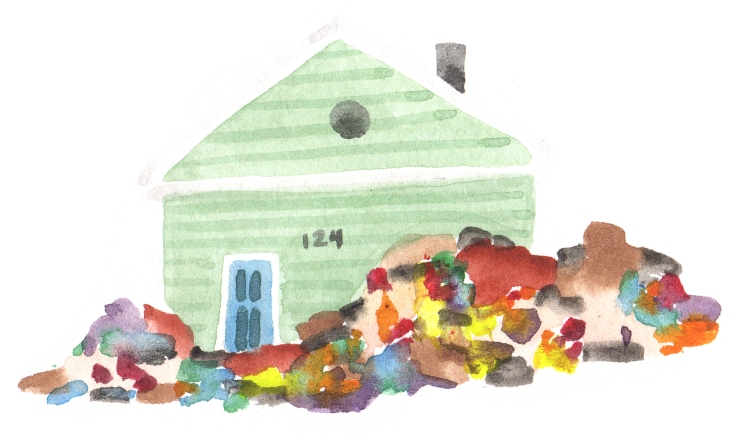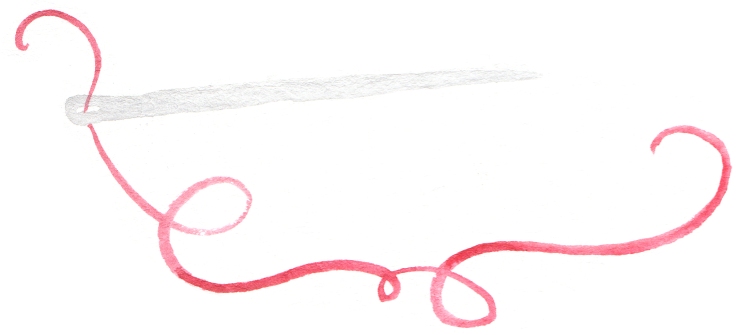Minimalism has become a popular trend, which is awesome. Folks are discarding belongings of all varieties right and left with thanks to Marie Kondo’s advice on tidying and with inspiration from The Minimalist podcast (also their documentary, Minimalism).

Of course, the easiest option for getting rid of unwanted items is to gather them up and toss them in a dumpster. Admittedly, that’s what I used to do before I became aware of the detrimental effect of landfills on our environment. I fell victim to thinking, “Out of sight, out of mind” until I heard a new adage, “There is no ‘away’.”

In the past few years, I have learned a whole lot about landfills and how harmful they are to our planet. Since learning about landfills I have held onto tons of things I would have easily gotten rid of in the past.
“Landfill disposal of municipal solid waste represents one of the largest anthropogenic global methane emission sources.”*
One day not too long ago, I was watching the only episode of Hoarders I have ever seen and it spoke to me. The hoarder in question said to the host, “I don’t want to contribute to a landfill.” And in response the host came back with, “Well you’re just living in your own landfill.” Woah. That’s a truth bomb if I’ve ever heard one.

Definition of hoarding: to accumulate for preservation, future use, etc., in a hidden or carefully guarded place.
Also, I’m totally hoarding all sorts of things that I no longer need, such as torn clothes and empty Kombucha bottles, but I fear contributing to the landfill like Mr. Hoarder man.
I’ve come to learn there are many options for properly discarding items to ensure they end up in a better place than a landfill. And yes, it is a bit more time consuming than scooping everything into a dumpster. Yet, a lot of these things are easier than one might think. Even if you just try a few of these options as an alternative, you will be helping our planet in a big way!
“Municipal Solid Waste (MSW)—more commonly known as trash or garbage—consists of everyday items we use and then throw away, such as product packaging, grass clippings, furniture, clothing, bottles, food scraps, newspapers, appliances, paint, and batteries.” – EPA
Lettuce break this down, shall we? (A compost pun for your enjoyment).
Product Packaging
Whether it is packaged in plastic or cardboard, it should be recyclable. Once you remove your current collection of product packaging, try to avoid buying things that come in packages as much as possible. This can be achieved by purchasing things second hand or shopping in the bulk section of local stores. I know this is tough in our age of technology, but try to shop online as little as possible. It is impossible to avoid packaging if you buy online since it has to be shipped in something. This is also an opportunity to consider the carbon footprint of shopping. If you have the option to buy something at a store, the amount of traveling your item has to do to get to you is far reduced.
Grass Clippings
100% compostable.
Furniture & Clothing
If you still want it and it can be repaired, find a repair shop near you to salvage your furniture or take your clothes to a tailor. Or even our favorite company, Patagonia. They repair clothing, because they know the value of fixing before ditching. Patagonia’s mantra is, “Build the best product, cause no unnecessary harm, use business to inspire and implement solutions to the environmental crisis.” They encourage thinking twice before buying something you might not need. A great mantra for sustainability, and even better for your wallet! Patagonia also partners with iFixit, a “free repair guide for everything written by everyone.” This gives you an opportunity to learn a new skill!

If you no longer want your furniture but it is still usable, drop it off at a thrift store, donate to a place like Habitat for Humanity’s ReStore, or local shelters, or try selling it via Craigslist/ebay. Just because you’ve moved on, doesn’t mean someone else won’t want to use it!
Have an old mattress or box spring you need to get rid of? Recently, California adopted a free mattress recycling program. Check out http://byebyemattress.com/california for recycling facility locations.
Bottles
I recommend reusing as many bottles as you need, either for drinking or taking to a refill shop for shampoo, hand soap, dish soap, body wash, etc. Whatever you don’t need, recycle. Definitely try to avoid plastic bottles as much as possible. I haven’t bought a water bottle in years and it feels great knowing I’ve personally reduced contributions to landfills and ocean pollution by eliminating an unnecessary piece of garbage from my life.
Food Scraps
Most food scraps are compostable in your own backyard! If you haven’t jumped on the compost train yet, you actually might be shocked to discover how many things can be composted. Of course there are the obvious things, like banana peels and apple cores, but you can also compost coffee grounds, tea bags, crushed egg shells, toilet paper rolls, the list goes on! If you have a Bokashi bucket, you can actually compost raw and cooked meat, bones, dairy, rice, bread, pasta, etc.
Food waste is an enormous issue when it comes to landfills and contributing to carbon dioxide emissions, so the more of it you can convert into soil and divert into your garden, the better! Learn more from our NYC Master Composter pal and author of Compost City, Rebecca Louie: https://thecompostess.com/
Newspapers
Compostable. In fact, worms love them for bedding if you do indoor vermicomposting. Watch our video to learn about building your own indoor composting bin.
Appliances
Similar to furniture and clothing. If it can be repaired, great! If not, look up your nearest appliance recycling center. There’s a place here in Sacramento, CA called Eco Appliance Recycling and they will collect all sorts of appliances, from microwaves to refrigerators. They also take e-waste, like computers, VHS/DVD players, etc. All the things that become outdated and lose their value in a hot second. Check out their website for more info if you live in the area.

Paint & Other Toxic Chemicals
For all the cans and bottles of half-used paints and ancient cleaners accumulating under your sink or in the garage that you’re not using any more, there’s a recycling center for that too. And I can assure you, it cannot be easier to get rid of these the safe way.
Last summer we helped clear out part of my parents’ basement. We piled all sorts of dusty, chemical-laden things in the back of our car and took them to a Household Hazardous Waste Drop Off Facility near Fruitridge Rd. Without getting out of our car, an employee took the things out of the trunk and we were on our way!

I feel this is the most crucial thing to keep out of landfills and especially out of drains. These chemicals poison the land and waterways (your drinking water!), so please discard them responsibly.
Batteries
In Sacramento, it is actually illegal to throw batteries in the garbage due to their contribution to landfill toxicity. Visit Earth 911 to find a recycling facility nearest to you. Rechargeable batteries are an awesome alternative for high-drain devices, the electronic devices that burn through battery energy quickly, like a portable video game console or a point & shoot digital camera.
As you can see, there’s an option for everything to be diverted from landfills with a bit of extra care. And you don’t have to collect and store it all in your house!
Is there anything we missed? We’d love to hear your ideas, tips, and questions!
*IPCC in Climate Change 2013: The Physical Science Basis (eds Stocker, T. F. et al.) (Cambridge Univ. Press, 2013).

Article By: Heather Kennedy
Heather is the Co-founder of Urban Treehouse. She produces the blog and web series and finds joy in having the opportunity to share inspiring stories about people in her community that are making a difference. Heather also co-owns Sea Stand Productions with her husband and Director of Photography for Urban Treehouse, Mikael Gustafson, where the two produce documentaries, commercials, and web videos for a variety of companies with a focus in nonprofit organizations.

Watercolor Illustrations by: Rosaura Unangst
Rosaura Unangst is the owner/artist behind Pigment & Parchment. She studied American Studies at UC Santa Cruz and now sends handmade wedding stationery around the globe & teaches workshops all over California. She is happy to use her artwork to promote education, environmentalism, & pretty much any cause that tugs at her bleeding liberal heart (just email her if you’ve got a cause in need of art).


Leave a comment